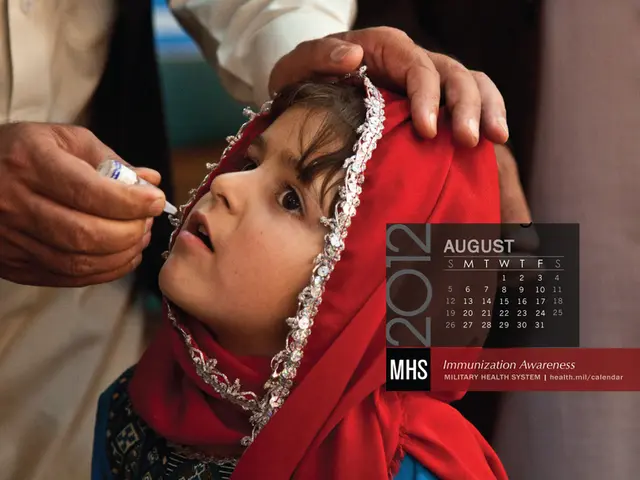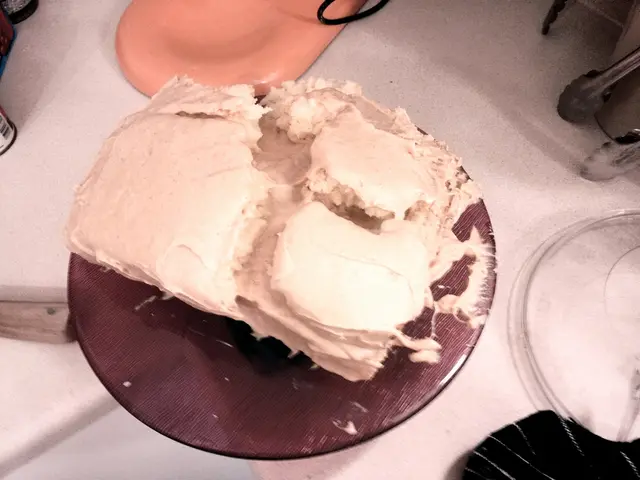Distinguishing Age Spots from Skin Cancer: Signs to Look For
Fresh Take:
Hey there! Let's delve into the differences between age spots, skin cancer, and actinic keratosis – all pigmentation issues that can pop up on your skin, particularly in sunny areas.
The Lowdown:
Age spots, sun spots, liver spots – call them what you will, these harmless patches are quite common and usually appear on people over middle age. They're often yellow, brown, or grey, and have well-defined borders. Unlike skin cancer, they're flat, smooth, and don't itch or cause any issues. They pop up from the body's attempt to protect our skin from UVA radiation – kinda like a tan, but not as fun.
Now, skin cancer is a whole different kettle of fish. It's a malignant growth that can spread to other parts of your body, and various types, like basal cell carcinoma and squamous cell carcinoma, are more likely to appear on sun-soaked areas. If left untreated, basal cell carcinoma can lead to disfigurement, while squamous cell carcinoma can even spread to other organs.
Actinic keratosis, a precancerous condition, can look a bit like age spots initially. However, it's a red, scaly patch that may form crusty bumps. If ignored, actinic keratosis can potentially turn into squamous cell carcinoma.
Know Your Spots:
Here's a quick guide to the symptoms of each condition:
Age spots:- Flat and smooth- Yellow, brown, or grey- Well-defined borders- A few millimeters to centimeters in size
Skin cancer:- Asymmetrical shape- Irregular edges- Color changes or multiple colors- Changes in size, shape, or location- Pale scaly patches or raised, red patches- Itching, oozing, or bleeding
Actinic keratosis:- Rough, scaly patches- Red, pink, or skin-coloured patches- Flat or raised lesions similar to age spots- Clustered acne-like bumps or patches on lips
What to Do:
If you notice any growths or changes in your spots, don't panic! It doesn't necessarily mean you have skin cancer. But keep an eye on them and consult a healthcare professional if they:
- Change in size, shape, or color
- Look different from other spots
- Itch, bleed, or don't heal within four weeks
Making Informed Choices:
Diagnosis involves a physical examination and in some cases, skin biopsy. The prognosis and treatment options vary depending on the type of skin condition:
Age spots:- Usually require no treatment as they're harmless- Creams, lotions, laser treatments, cryosurgery, microdermabrasion, and chemical peels can help reduce their appearance
Skin cancer:- Surgical excision or Mohs surgery may be used to remove the tumor- Topical treatments, radiation therapy, chemotherapy, immunotherapy, or systemic medications may be prescribed
Actinic keratosis:- Topical creams, cryotherapy, or photodynamic therapy can help prevent progression to squamous cell carcinoma- Regular monitoring by a dermatologist is vital
Remember, the key to successful treatment lies in early detection. Take care of your skin, stay safe, and don't hesitate to consult a professional if you have any concerns! 💚🌞
- Medical-conditions such as melanoma, a type of skin cancer, can be dangerous if left untreated as it may spread to other parts of the body, while age spots, a common pigmentation issue in seniors, are typically harmless and require no treatment.
- Skin care and health-and-wellness practices should involve regular self-examinations and professional consultations for the detection of various skin conditions, such as otherskin cancer or actinic keratosis, a precancerous condition that can develop into more serious medical conditions like squamous cell carcinoma.
- The field of dermatology plays a critical role in the prevention, diagnosis, and treatment of numerous skin-related problems, including skin cancer, age spots, and actinic keratosis, which can all benefit from the advancements in science and healthcare technology.
- Oncology specialists might need to be consulted for certain cases of otherskin cancer, like basal cell carcinoma or squamous cell carcinoma, which can lead to disfigurement or even spread to other organs if left untreated.
- Skin care routines should prioritize the care and prevention of skin-conditions, particularly for seniors, who may be more prone to age spots and other pigmentation issues; while also taking precautions against skin cancer and skin cancer precursor conditions like actinic keratosis.








